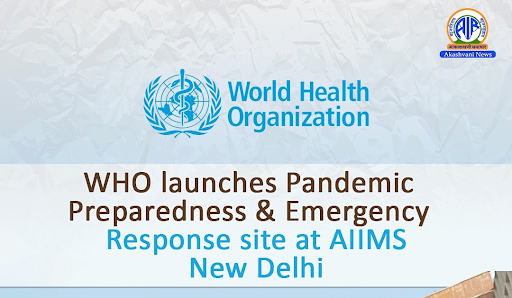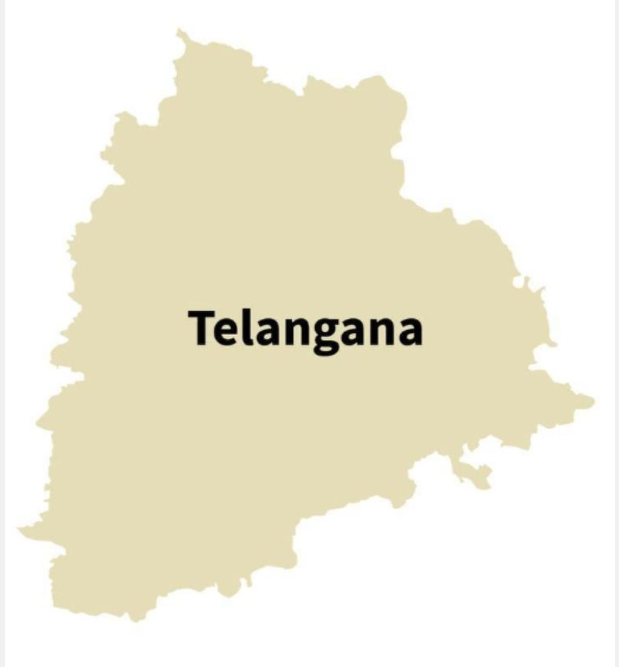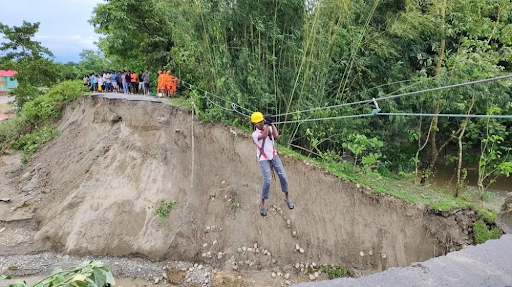



WHO has opened a Pandemic Preparedness and Emergency Response site at AIIMS New Delhi to act as a regional hub. It will strengthen health security through training, simulations, capacity building, and better surveillance. The initiative supports faster responses to outbreaks and aligns India with WHO’s global preparedness strategy.

Copyright infringement not intended
Picture Courtesy: NEWSONAIR
The World Health Organisation (WHO) launched Pandemic Preparedness and Emergency Response at All India Institute of Medical Sciences (AIIMS) in New Delhi.
|
Read all about: WHO SIGNS GLOBAL PANDEMIC PACT l WHAT IS DISEASE X, AND WHY SHOULD THE WORLD PREPARE FOR IT? |
It is the process of planning, coordinating, and building capacities at local, national, and global levels to effectively anticipate, respond to, and recover from the impacts of infectious disease outbreak.
Pandemics are catastrophic events with severe economic and social consequences beyond health crises. Investing in preparedness is more cost-effective than crisis management.
Origin: Negotiations began in 2021, driven by the failures observed during the COVID-19 pandemic, such as "vaccine nationalism," where wealthy nations hoarded supplies, leaving developing countries vulnerable.
Core Objective: To ensure all countries are better prepared and can respond effectively and collaboratively to future pandemic threats, with a central focus on equity.
Legal Basis: The agreement will become legally binding after being ratified by 60 countries.
Benefit-Sharing Commitment
Manufacturers will provide the WHO with real-time access to 20% of their production of pandemic-related products (vaccines, therapeutics, diagnostics) — 10% as donations and 10% at affordable prices.
One Health Approach
The agreement formally integrates a "One Health" approach, recognizing the interconnectedness of human, animal, and environmental health to prevent zoonotic spillovers at the source.
Global Supply Chain and Logistics Network (GSCL)
A network will be established to prevent the supply chain disruptions seen during COVID-19 and ensure the timely and equitable distribution of medical supplies.
Coordinating Financial Mechanism
Dedicated financial mechanism to support pandemic prevention, preparedness, and response (PPR). This builds on the existing Pandemic Fund, hosted by the World Bank, which has already mobilized billions to help low- and middle-income countries.
Technology Transfer
It promotes the transfer of technology and know-how to build manufacturing capacity for vaccines and other health products in developing countries, reducing global reliance on a few production hubs.
Better global health security requires proactive strategies: sustained investment, fighting misinformation, ensuring equitable medical access, and strengthening 'One Health' against human-animal-environment threats.
Source: NEWSONAIR
|
PRACTICE QUESTION Q. Critically analyze the 'One Health' approach as a cornerstone for strengthening India's pandemic preparedness and preventing future zoonotic disease outbreaks. 150 words |
The WHO Pandemic Agreement is a legally binding international instrument adopted by the World Health Assembly in May 2025. Its goal is to create a comprehensive framework to help countries prevent, prepare for, and respond to future pandemics more equitably and efficiently, addressing gaps exposed by the COVID-19 pandemic.
The agreement was developed in response to the impact of the COVID-19 pandemic, which highlighted significant global inequities in access to vaccines, personal protective equipment, and healthcare, as well as the need for better international coordination and sustained financing.
The "One Health" approach links human, animal, and ecosystem health. The Pandemic Agreement urges coordinated action and multisectoral surveillance to prevent zoonotic diseases and enable early pandemic detection.









© 2025 iasgyan. All right reserved